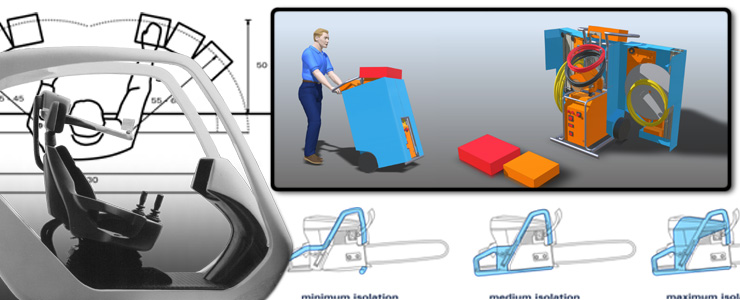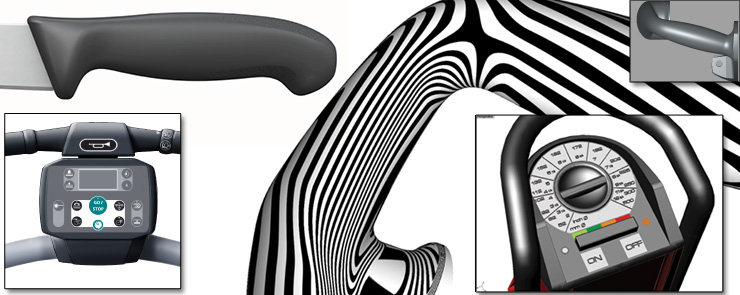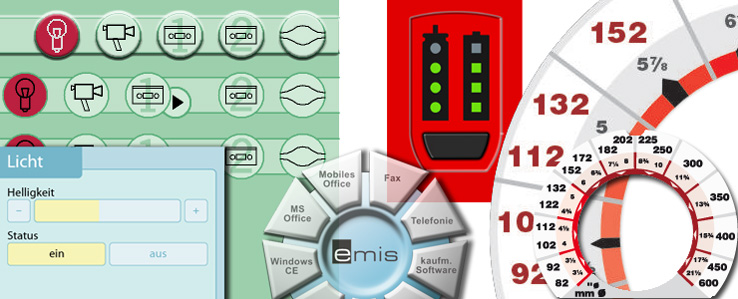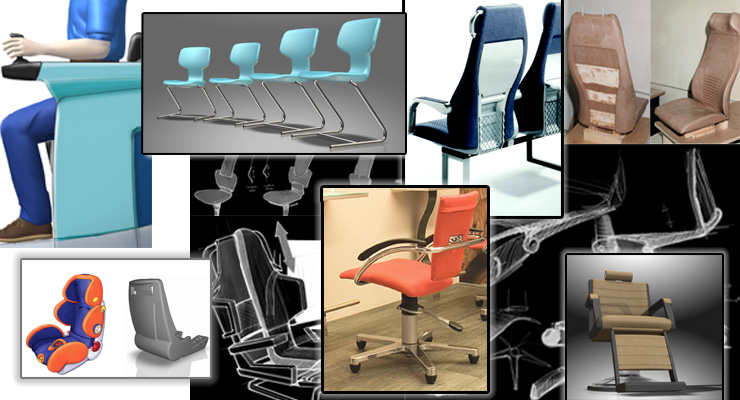
Home ›
Specials
Development of new application concepts
Product ergonomics goes far beyond the product itself.
By hearing the term ergonomics one thinks primarily of products that lie perfectly in hand and show great usability. This followed a product but only in terms of gripping and operating ergonomics. The working process in which the product is used is out of consideration, although this has a significant influence on the design.
Ergonomics is an important field of work sciences. They can be divided into two fundamental areas: Ergonomics (micro ergonomics) and production ergonomics (macro ergonomics). In the transition between the two sub-areas with complex human-machine systems is often blurred.
As the link between work, technology and human ergonomics it is an interdisciplinary science that includes a very large area for working and interacting systems design, scientific subdivisions: Thus, the ergonomics of the systems-based, analytical treatment of issues concerning human-machine systems, For example, in relation to the function allocation between man and machine, the degree of automation or system integration resulting from the constraints of the human-machine interface referred to as system ergonomics.
Application scenario, use classification, user orientation
Actions: Carrying, using, operating, building up.
Ergonomics is divided on the basis of the subject area is usually in the product ergonomics (micro ergonomics) and in production ergonomics (macro ergonomics). In the transition between two sub-areas with complex human-machine systems is often blurred, as essential in the ergonomic design of the product later use context. For example, the equipment design (Ergonomics) is always in compliance with the working conditions such as work environment and working task (made production ergonomics). Especially in product ergonomics not only from an ergonomic point of view appropriate design, but also a formal, visual, auditory and tactile demands sufficient design is necessary to ensure the market attractiveness of the products.

Grip ergonomics
Actions: grabbing, carrying, holding, embracing, wielding; switching.
The anthropometry attention has been paid to the collection and description of the properties of the human body (static anthropometry: body composition and body forces)
and body movements (dynamic anthropometry) in the context of the spatial workplace design.
The technical systems to adapt to the abilities and skills of the people is also called Human Engineering. Anthropometric measurements are in
Standards, regulations and certifications in scope and designed to guarantee quality standards.
Ergonomic issues frequently arise from actual use. Solutions / enhancements are often evaluated only by empirical models.

User ergonomics
Actions: inputting, setting up, interacting, displaying, informing, explaining, controlling.
The software ergonomics deals with the human-like design of human-computer or human-computer interaction.
The main area of work is the design and evaluation of user interfaces for interactive computer-based systems in terms of the technical offer and the information given to the task execution necessary information of the user. In addition to the manifold in the office and home environments using software products, including the provision of software systems for machine control in areas of production, process control and vehicle management, but also systems that we use daily, such as B . household appliances, vending machines, consumer electronics, etc.
The investigation and ensure the use of technical systems is the subject of usability engineering. The aspects of human information processing are explained both by the exercise physiology and the psychology of perception and cognitive psychology.

Seating ergonomics
Actions: Sitting, resting, staying, concentrating, learning, driving.
In some fields of application are domain-specific components have developed the ergonomics. Because the ergonomics sees as a link between people and technology, is the engineering and human sciences as well as design and computer science to a high importance in ergonomics.
Questions of the physiological properties of the people - particularly in relation to the physical performance - addressed by the work physiology.
The interaction between the work of man and his health are the subject of occupational medicine.
From a psychological perspective ergonomic issues addressed in the work of psychology, with the engineering psychology specifically deals with the design of human-machine systems.
The range of issues here range from the human reliability, even on those aspects of psychological constructs
the evaluation of human-machine systems and human-machine interfaces to perceptual and cognitive psychological aspects.
